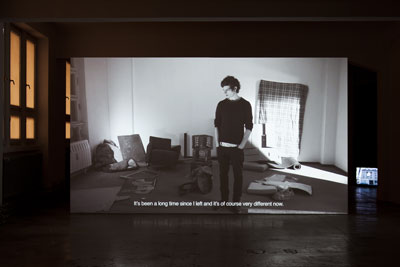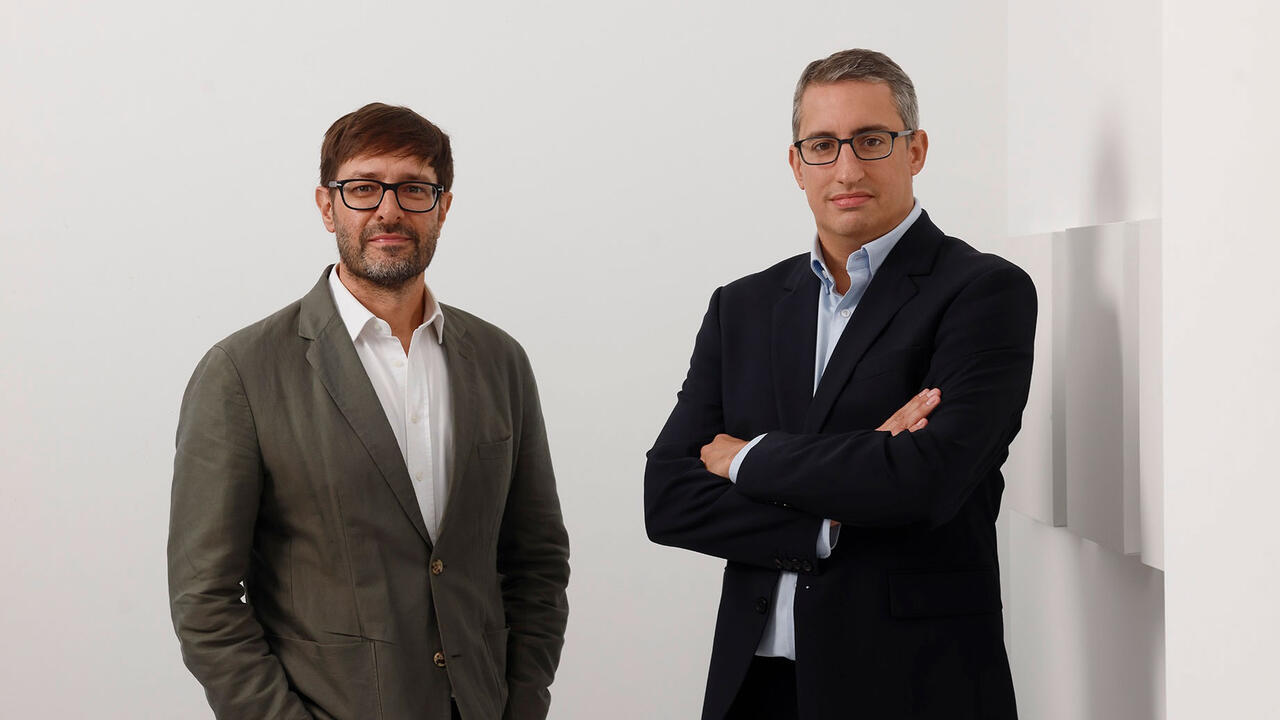Annika Eriksson
Künstlerhaus
Künstlerhaus

Annika Eriksson’s works are not usually classified under relational aesthetics, although social narratives traverse them. This exhibition, The Trilogy, explores her relation to Berlin and its inhabitants through three videos, which portray the city as a site of transformation, activism and gentrification. Standing behind the camera, Eriksson may be practising a sort of ‘safe’ relational aesthetics: assuming the role of director to maintain a level of authority and sincerity without involving her participants on a long-term basis.
The five-channel video installation Wir bleiben/The Last Tenants (We are staying, 2011) features two projections and three monitors which present an apartment building where Eriksson once lived and which has now been taken over by developers. The artist interviews long-term tenants who have refused to leave; although her questions are not heard, her presence is felt since they clearly trust her and share their stories. The collective history contained inside the building is encapsulated in Wir Bleiben, which comes to resemble a filmic version of architecture: a ‘home’ where the tenants could live forever, albeit on screen. Gentrification brings not only historical erasure to neighbourhoods but also a kind of socio-economic cleansing, which replaces local stories with tales of consumption. One resident comments on ‘those super pricey hairdressers now where you can’t get a haircut for less than 30 euros’.
Eriksson – who moved from Stockholm to Berlin in 2002 with a DAAD fellowship and decided to stay – expresses an affinity to another group of rapidly disappearing citizens in Wir sind wieder da (We’re here again, 2010). The one-channel video installation features punks who were once synonymous with West Berlin in the 1980s but have been edged out by designer boutiques and cafés. They hang out in an empty lot drinking beer, smoking and talking, but we cannot hear what they say; their passive aggressive attitude alone can be considered as a form of political resistance.

It did happen soon (2012) features a young actor playing various figures from the Berlin Kommune 1 (Commune 1). Established in the West sector in 1967, Kommune 1 was one of the first communes run by West Germans who directly opposed the conservative values prevalent in the wake of the Wirtschaftswunder (economic miracle). As the actor continues his monologues, it becomes clear that he is too young to have experienced the 1960s resistance movement; the past is as unknown as the future. Shot in black and white, the film looks like a historical document; science fiction passages from writers such as Doris Lessing add to the distortion of time. The actor stares directly into the camera, full of political visions and representative of our future. Or perhaps, like the punks and Eriksson’s neighbours, he stands for yet another remnant of a bygone Berlin.
















